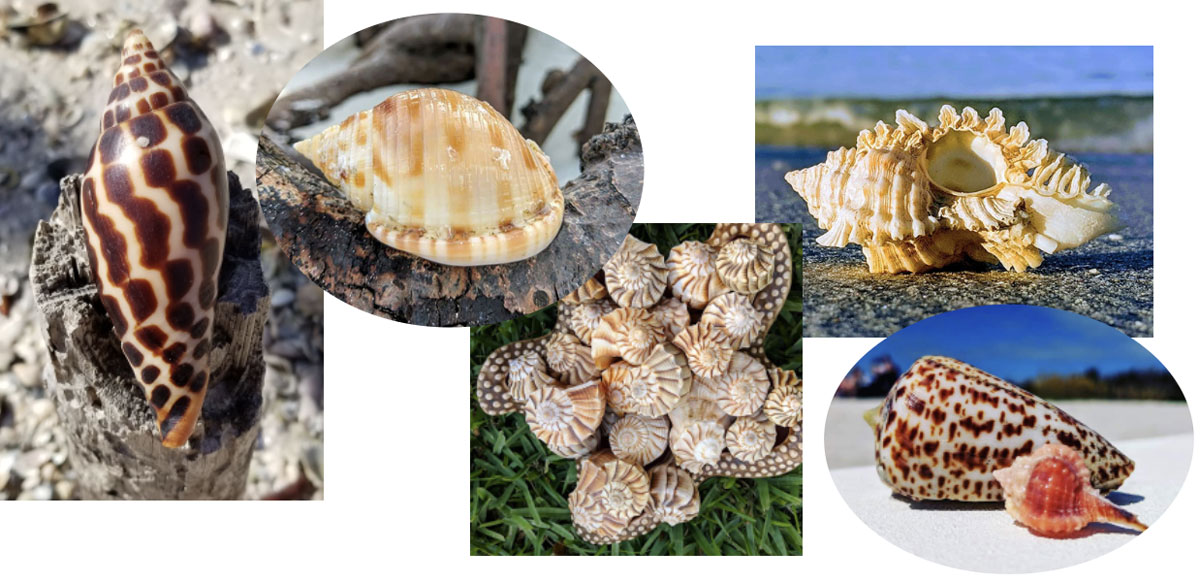Treasure Seeker in the Ten Thousand Islands

Capt. Tammy Everts is no stranger to the wonders of the natural world. As a child growing up in Minnesota, she would often spend her free time watching bluebirds and orioles come to her household bird feeders in the early morning. Even searching for beach treasure came at a young age, as she picked up agates and sea glass on the shores of Lake Superior.
But it wasn’t until Tammy’s family took a vacation to southwest Florida that everything came into focus. “It was a world of treasures like I had never seen before…the shapes, colors and patterns of seashells!” Tammy exclaims. “I began devouring every book I could find on shells and beach life here in Florida. Words I had never heard of before became part of my vernacular like wrack line and tide schedule, bivalves and minis.”
Her passion for seashells continued until adulthood when she and her husband moved in 2012 to Bonita Springs, Florida, near the Ten Thousand Islands Wildlife Refuge. The refuge, located just south of Marcos Island, Florida, is one of the last authentic Floridian experiences, with its remote islands virtually untouched by humanity. Those visiting this wild area may find incredible shells like the elusive Junonia, lace murex, alphabet cones, rose murex, gaudy nautica, lightning whelks, or the Florida horse conch.

Above Left: Rare-patterned Junonia found by a Treasure Seekers Shell Tours guest. Above: Tammy's shells: Scotch Bonnet (Semicassis granulate), Lightning Whelk (Busycon perversum), Lace Murex (Chicoreus (Triplex) florifer), Alphabet Cone (Conus spuricus)
Tammy also has a special place in her heart for the dark chocolate nutmegs and scotch bonnets that wash up on shore. She rarely collects shells, although her prize junonia shells are on display at home. Instead, she prefers to take a photo and leave them for others to find, taking only the memories of good times with friends.

Above: Tammy's shells: Rose Murex (Vokesimurex rubidus), Florida Horse Conch (Triplofusus papillosus), Rose Petal Tellin (Eurytellin lineata), True Tulip (Fasciolaria tulipa), Junonias (Scaphella Junonia), Kings Crown (Melonga corona), Golden Olive (Olividae), Sea Urchin with True Tulip on top, Florida Fighting Conch (Strombus alatus) with hermit crab inside.
Although Tammy’s collection is not extensive, she does hope to one day find an intact lion’s paw scallop and a nautilus shell. Her favorite time to beachcomb is early in the mornings, to see what the night has washed up on shore. Her future plans to visit the Seychelles and the Philippines sound amazing, but as she puts it, “Sunrises over the mangroves here in Florida are pretty hard to beat.”
And shells and sunrises are not the only thing that visitors find in this area: sea hares floating around the shallow tide pools, manatees swimming alongside a boat, and Roseate spoonbills foraging in the mangroves are just some of the extraordinary wildlife that Tammy has spotted during her journeys exploring the Ten Thousand Islands. It truly is a slice of heaven for nature lover and shell hunters alike.
Learn more about seashells
Learn more about identifying shells, the history of seashell collecting, great shelling beaches, and the lives of the animals who make the shells we find on the beach. Articles ›
Learn more about the best beaches and destinations for sea and beach glass, seashells, fossils, rocks, and more beach finds around the world. Articles ›
No live shelling: Be sure shells are empty and sand dollars, sea stars, and sea urchins are no longer alive before you bring them home.
This article appeared in the Beachcombing Magazine September/October 2019 issue.









